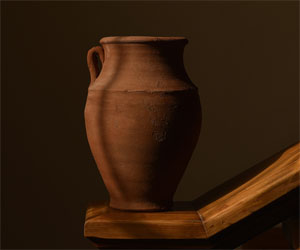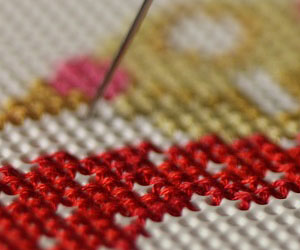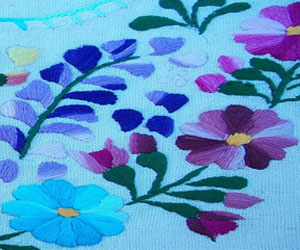


A Universal Craft With Unique Flavors

Pottery, a craft as ancient as human civilization itself, has played a central role in cultures across the globe. While the fundamental principles of shaping clay into functional and artistic objects remain universal, the diverse traditions, techniques, and cultupotterydifferentculturesral contexts in which pottery thrives make it a fascinating lens through which to explore the world's rich tapestry of heritage.
Asia: The Cradle Of Ceramic Art
The roots of pottery in Asia run deep, with China often hailed as the birthplace of ceramics. Chinese pottery traditions date back thousands of years, and they have left an indelible mark on the global ceramic landscape. Iconic Chinese porcelain, known for its delicate blue and white designs, is world-renowned. Japanese pottery, on the other hand, is celebrated for its earthy, rustic aesthetics and meticulous craftsmanship. Countries like Korea, Thailand, and Vietnam have their unique ceramic traditions, showcasing the diversity within Asian pottery.
Africa: The Rhythms Of Clay
Across the African continent, pottery is both a functional and artistic tradition. The terracotta pottery of the Nok civilization in Nigeria, dating back to 1000 BC, represents some of the earliest ceramic artifacts in sub-Saharan Africa. In many African cultures, women are the primary potters, carrying on age-old traditions of coiling and hand-building. Each piece reflects the cultural values, motifs, and symbols of the community it hails from.
The Americas: Ancient Craftsmanship
In the Americas, pre-Columbian civilizations made remarkable contributions to pottery. The intricate designs and remarkable clay work of the Moche, Inca, and Maya peoples provide a window into the artistic and functional aspects of their societies. Native American tribes have their own distinctive styles, using clay to create pottery that is deeply rooted in their spiritual and cultural practices.
Europe: A Tapestry Of Styles
Europe boasts a rich tapestry of pottery traditions. The majolica pottery of Italy, famous for its colorful glazes and ornate patterns, showcases the Mediterranean region's artistry. The Delftware of the Netherlands is cherished for its blue and white hand-painted pottery. Spain, with its talavera and sevillana ceramics, is known for its vibrant designs. Eastern Europe, including Poland, Hungary, and Russia, boasts unique styles reflecting both functional and artistic sensibilities.
The Middle East: An Epicenter Of Innovation
The Middle East, often regarded as the cradle of civilization, has a profound history of pottery. Mesopotamia, the region between the Tigris and Euphrates rivers, is where pottery's wheel was first invented. The intricate, blue-glazed tiles of Islamic pottery are celebrated for their geometric patterns and calligraphic designs. Iran's Persian ceramics are known for their exquisite craftsmanship and vivid color palettes.
Pottery unites the world's cultures in a shared fascination with clay and fire. Its enduring appeal is rooted in the way each culture brings its unique perspective and artistic expression to the craft. As we explore pottery in different cultures, we gain a deeper appreciation for the universal human desire to shape clay into something functional, beautiful, and reflective of the cultural tapestry from which it emerges. This age-old craft, with its regional nuances, tells a story of human ingenuity, creativity, and adaptability.
The Artistry In Every Stitch
 Quilting: Quilting is a technique that marries practicality and artistry. Quilts are made by stitching layers of fabric together, often with intricate patterns. Traditional quilt designs tell stories and are passed down through generations. Quilting stitches can be simple or highly detailed, adding depth and warmth to these cherished heirlooms.
Quilting: Quilting is a technique that marries practicality and artistry. Quilts are made by stitching layers of fabric together, often with intricate patterns. Traditional quilt designs tell stories and are passed down through generations. Quilting stitches can be simple or highly detailed, adding depth and warmth to these cherished heirlooms.
Cross-Stitch: Cross-stitch is known for its precise, grid-based patterns created by "X" stitches. It is a popular choice for decorative items like samplers and personalized gifts. The process is meditative, requiring attention to detail and precision in every stitch.
Appliqué: Appliqué is the art of attaching smaller pieces of fabric onto a larger base to create images, patterns, or designs. This technique can be found in quilting, clothing, and decorative textiles. Appliqué often involves intricate stitching to secure the fabric pieces and add embellishments.
Thread Painting: Thread painting is a technique that mimics the strokes of a painter's brush with colored threads. Artists use varying thread densities and colors to create detailed images on fabric. The result is a stunning visual masterpiece.
Modern Innovation: Threadwork techniques have also embraced modern technology. Computerized embroidery machines allow for intricate and repetitive designs with precision and speed. Additionally, contemporary artists often combine traditional techniques with digital art, creating a fusion of the old and new.
Cultural Significance: Many threadwork techniques carry cultural and historical significance. The choice of colors, patterns, and motifs can reflect the heritage and storytelling of a particular community. These crafts also serve as a way to preserve and pass down traditions through the generations.






Crafting The Foundations Of A Creative Journey
 Safety First: Safety is paramount in woodworking. As a beginner, familiarize yourself with the proper use of safety gear, such as safety glasses, ear protection, and dust masks. You should also learn how to use tools safely, including saws, chisels, and drills, to avoid accidents and injuries.
Safety First: Safety is paramount in woodworking. As a beginner, familiarize yourself with the proper use of safety gear, such as safety glasses, ear protection, and dust masks. You should also learn how to use tools safely, including saws, chisels, and drills, to avoid accidents and injuries.
Tools Of The Trade: Every woodworker, regardless of their skill level, relies on a set of essential tools. As a beginner, you'll want to start with the basics, which may include a saw, chisels, a mallet, a tape measure, a square, and clamps. Over time, you can gradually expand your tool collection as your skills progress.
Selecting Your Wood: Choosing the right type of wood is a critical step in any woodworking project. Beginners often opt for softwoods like pine or cedar because they are easier to work with and more forgiving to mistakes. As you gain experience, you can explore the use of hardwoods like oak, maple, and cherry.
Learning The Art Of Joinery: Joinery is the technique of connecting two pieces of wood to form a strong, lasting bond. As a beginner, start with basic joinery methods such as butt joints, lap joints, and dowels. As you become more skilled, you can delve into more complex joinery, such as mortise and tenon or dovetail joints.
Practicing Patience: Woodworking requires patience. It's essential to approach each project with a willingness to learn from your mistakes and take your time to ensure precision. The journey is as important as the final product, and each project you complete will build your skills and confidence.
A Time-Honored Craft With Global Diversity
 Asian Brewing Traditions: Asia boasts an array of distinctive brewing traditions. Sake, a Japanese rice wine, is an integral part of Japanese culture, with centuries of tradition and craftsmanship. China, on the other hand, has a rich history of brewing rice-based beers like Qingdao, which are now appreciated globally. South Korea is known for its popular rice-based brew, Makgeolli, a traditional and lightly sparkling beverage.
Asian Brewing Traditions: Asia boasts an array of distinctive brewing traditions. Sake, a Japanese rice wine, is an integral part of Japanese culture, with centuries of tradition and craftsmanship. China, on the other hand, has a rich history of brewing rice-based beers like Qingdao, which are now appreciated globally. South Korea is known for its popular rice-based brew, Makgeolli, a traditional and lightly sparkling beverage.
Beer As A Cultural Symbol: Brewing traditions often intertwine with cultural, religious, and social customs. In places like Germany, beer gardens and Oktoberfest celebrations are iconic social gatherings. In Mexico, Day of the Dead festivals include offerings of beer to honor the deceased. Throughout history, beer has played a significant role in ceremonies, rituals, and community bonding.
Global Fusion And Innovation: The brewing world is a global stage where traditions blend and evolve. Brewers often take inspiration from different regions and styles, resulting in fusion brews that incorporate elements of various brewing traditions. For example, the emergence of "Belgo-American" beers combines the brewing traditions of Belgium with the innovative spirit of American craft brewing.
Brewing Traditions In The Modern Era: In today's interconnected world, brewing traditions are shared and celebrated globally. The rise of international beer festivals, beer competitions, and the craft beer movement is a testament to the enduring appeal of brewing. It's a dynamic and ever-evolving craft where old meets new, and traditions find new life in the hands of innovative brewers.






A Timeless Connection
 The Romans, too, played a pivotal role in the history of wine. They expanded vine cultivation across their vast empire, introducing new techniques in viticulture and winemaking. The famous phrase "in vino veritas" (in wine, there is truth) emerged from Roman culture, emphasizing the way wine could loosen tongues and reveal one's innermost thoughts.
The Romans, too, played a pivotal role in the history of wine. They expanded vine cultivation across their vast empire, introducing new techniques in viticulture and winemaking. The famous phrase "in vino veritas" (in wine, there is truth) emerged from Roman culture, emphasizing the way wine could loosen tongues and reveal one's innermost thoughts.
Medieval Monasteries: Throughout the Middle Ages, wine remained a significant part of European culture. Monasteries became centers of wine production and preservation. Monks carefully cultivated vineyards and perfected the art of winemaking, leading to the creation of some of the world's most renowned wine regions, such as Bordeaux and Burgundy.
Exploration And Trade: As European explorers set out to conquer new lands, they brought vines with them to cultivate wine in their new colonies. Wine became a valuable trade commodity, driving exploration and colonization. Spanish missionaries, for instance, planted vineyards in California, paving the way for the Napa Valley wine region.
Modern Times: In more recent history, the 19th and 20th centuries witnessed significant advancements in winemaking techniques and the establishment of regulations governing the production of wine. Winemakers like Louis Pasteur made groundbreaking contributions to the science of fermentation, ensuring the consistent quality of wine.
Today, wine is produced and enjoyed on a global scale. Wine regions span the world, from the vineyards of France and Italy to the emerging wine industry of New Zealand. Wine continues to be a symbol of celebration, sophistication, and the finer things in life.